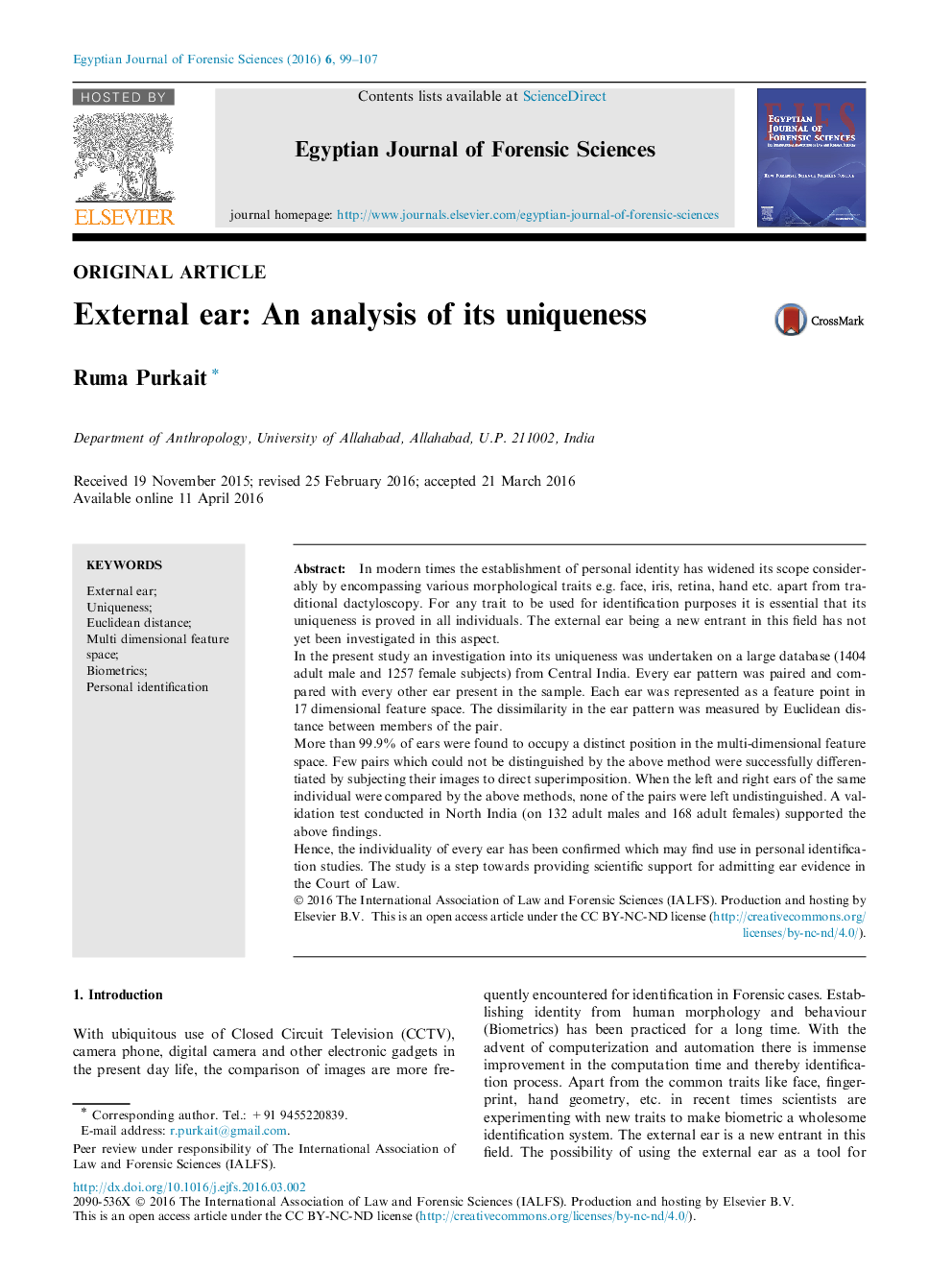| Article ID | Journal | Published Year | Pages | File Type |
|---|---|---|---|---|
| 1097424 | Egyptian Journal of Forensic Sciences | 2016 | 9 Pages |
:In modern times the establishment of personal identity has widened its scope considerably by encompassing various morphological traits e.g. face, iris, retina, hand etc. apart from traditional dactyloscopy. For any trait to be used for identification purposes it is essential that its uniqueness is proved in all individuals. The external ear being a new entrant in this field has not yet been investigated in this aspect.In the present study an investigation into its uniqueness was undertaken on a large database (1404 adult male and 1257 female subjects) from Central India. Every ear pattern was paired and compared with every other ear present in the sample. Each ear was represented as a feature point in 17 dimensional feature space. The dissimilarity in the ear pattern was measured by Euclidean distance between members of the pair.More than 99.9% of ears were found to occupy a distinct position in the multi-dimensional feature space. Few pairs which could not be distinguished by the above method were successfully differentiated by subjecting their images to direct superimposition. When the left and right ears of the same individual were compared by the above methods, none of the pairs were left undistinguished. A validation test conducted in North India (on 132 adult males and 168 adult females) supported the above findings.Hence, the individuality of every ear has been confirmed which may find use in personal identification studies. The study is a step towards providing scientific support for admitting ear evidence in the Court of Law.
